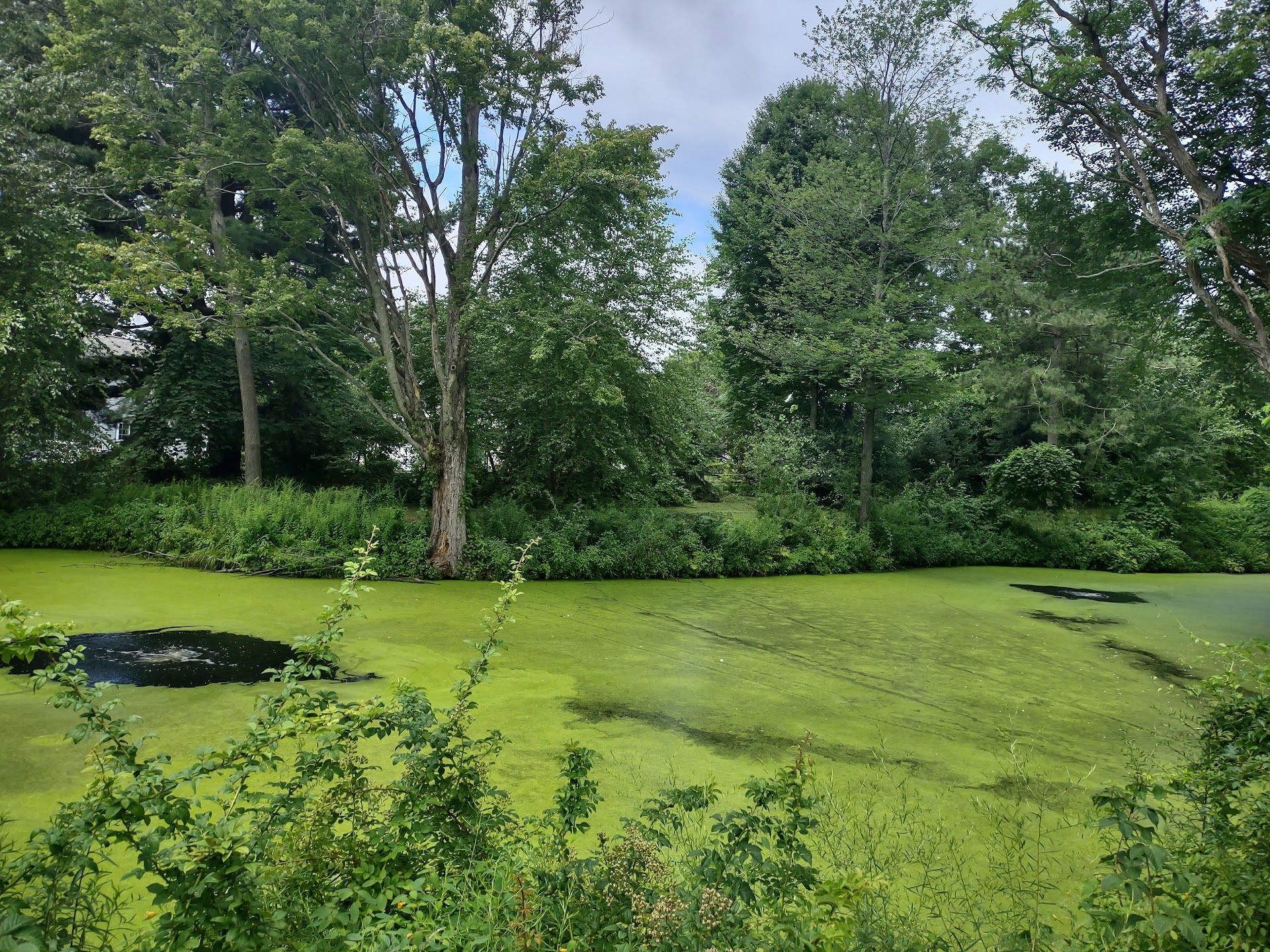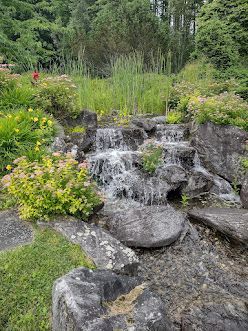Vemont Pond Algae control
Vermont Limnology
We Know How To Control Algae Growth!
Lake control of your Algae today!
We will get back to you as soon as possible.
Please try again later.
The Impact of Excessive Algae Growth
Oxygen Depletion
During nighttime, algae consume oxygen through respiration, leading to oxygen depletion, potentially killing fish and other inhabitants of your pond.
Water Quality Degradation
Algae blooms can result in murky, green water, reducing water clarity nutrients in the water and overall aesthetic appeal.
Nutrient Imbalance
Algae consume nutrients, and thrive in an environment where excess nutrients are available, outcompeting beneficial plants and disrupting the natural balance of the ecosystem.
Vermont's Trusted Professionals for All Your Pond Algae Needs
Maintaining a healthy pond is a never-ending cycle to ensure the balance of your pond and its inhabitants. We ensure the ecosystem they make up are established properly to provide a long-term solution to prevent excessive algae growth and preventing future algae problems. Establishing a healthy balance of fish, plants and beneficial bacteria will help maintain water quality and prevent algae growth. With regular upkeep and implementing modern practices like installing an aerator or a modern filtration system you can keep your pond clean and healthy.
Take Proactive Steps to Control Algae Growth
As a proud pond owner, you understand the serene beauty and tranquility that a well-maintained aquatic ecosystem can bring to your property. However, maintaining the health of your pond requires proactive management, especially when it comes to controlling algae and keeping your water clear. Learning effective strategies and solutions for pond algae control, such as controlling the nutrients in the water, ensures your pond or lake remains a vibrant and thriving ecosystem for aquatic life. Algae problems can now be a thing of the past.
01
Nutrient Management
Reduce Nutrient Load: Limiting the input of nutrients (like phosphorus and nitrogen) from fertilizers, runoff, and organic debris, as these nutrients promote algae in your pond.
Introduce Aquatic Plants: Planting beneficial aquatic plants can compete with algae for nutrients, reducing their availability and inhibiting algae.
02
Biological Controls
Algae-eating Fish: Introducing fish species that feed on algae, such as grass carp, can help control algae populations.
Beneficial Bacteria: Adding beneficial bacteria can help break down organic matter and reduce nutrient levels, making it difficult for algae to thrive.
03
Chemical Water Treatments
Algaecides: Using something like a copper based algaecide can be effective but should be used cautiously to avoid harming other aquatic life and to prevent chemical resistance in the future. Just like how our bodies can build a resistance to chemicals or medications, Algae can too!
Barley Straw: Placing barley straw in the pond can help control algae growth through the slow release of natural compounds that inhibit algae.
04
Regular Pond Maintenance
Manual Removal: Regularly removing algae manually can help keep growth under control.
Water Testing: Periodic testing of water quality can help identify nutrient levels and other conditions that may contribute to algae growth, allowing for prompt corrective actions.
Identifying Common Types of Pond Algae
Understanding the different types of algae in your pond or lake as well as what they need to thrive helps you ensure your pond or water garden avoids algae blooms keeping future growth under control. You may not be able to completely rid yourself of algae but preventing algae blooms and maintaining a balanced ecosystem is the ultimate goal.
Filamentous Algae
Filamentrous algae, more commonly known as pond scum is a long stringy algae that form dense mats on the surface of the water, giving your small pond a murky appearance and cutting off oxygen to your ponds fish and aquatic life.
String Algae
String algae is similar to filamentous algae forming dense mats that will give your pond a green and murky appearance. Often you will find string algae clinging to rocks, debris and other surfaces of your ponds shoreline disrupting the habitat. If not controlled, string algae can interfere with your equipment and overall pond health obstructing water circulation and aeration by clogging pumps, screens and irrigation systems
Planktonic Algae
Planktonic algae is microscopic algae suspended in the water column, causing green water and reduced water clarity with algae blooms. With these algae blooms, during the day, the algae produces oxygen through photosynthesis like all plants but at night the algae continues to respire, leading to oxygen depletion which could stress and kill your plants, fish and other inhabitants of your pond or lake.

Hair Algae
Thin, hair-like algae that can cover rocks, debris and substrates. It can look gorgeous in the right setting and even provide safety to small fish and other members of your pond, giving them places to hide from predators if maintained to a healthy level.
Natural Methods of Algae Control
Chemicals are not your only option for finding balance toward a clean pond!
Aquatic Plants
Introduce native plants such as water lettuce and water hyacinth to out compete algae for nutrients and provide shade to inhibit algae growth. Not only can adding aquatic plants to your pond help with preventing algae from pulling away from their food source but it also gives your fish a better environment to thrive and adds a good balance to the ecosystem you are wanting to have established
Beneficial Bacteria
Introduce beneficial bacteria supplements to the pond ecosystem to break down organic matter and consume excess nutrients, reducing algae growth.
UV Light
Controlling the level of sunlight using plants in and around your ponds shoreline can help with controlling growth. Install UV clarifiers to effectively kill free-floating algae cells, preventing algae blooms and improving water clarity.
Fish Management
Maintain a balanced fish population to prevent over-feeding leaving uneaten food, organic matter building up and excess fish waste, which can contribute to an over abundance of nutrients in your ponds.
Mechanical Algae Control
Chemicals are not your only option for finding balance toward control and a healthy pond!
Manually Remove Algae
Regularly remove excess algae manually using a pond rake or net to prevent overgrowth.
Grass Clippings
Utilize grass clippings as a natural mulch around the pond edge to prevent runoff of excess nutrients into the water.
Outcompete algae blooms with a proactive approach
Take proactive steps to prevent algae blooms by minimizing nutrient inputs, such as reducing fertilizer runoff and avoiding overfeeding fish.
Understanding Pond Algae Control and the steps you can take
Understanding pond algae and what it needs in its environment to thrive helps you understand how to control the levels of existing algae in your pond preventing the need for chemicals by cutting down the food, utilizing beneficial bacteria and limiting what algae needs to thrive. Algae are microscopic organisms that thrive in aquatic environments, utilizing nutrients and sunlight to multiply rapidly. While some pond algae are beneficial and essential for a balanced ecosystem, too much algae growth can lead to an unsightly algae bloom, foul odors, and detrimental effects on water quality and the ecosystem in and around your pond.
Long-Term Solutions to Control Algae
Sustainable Pond Management
Water Quality Monitoring
Regularly test pond water quality such as pH, oxygen, and nutrient levels to identify potential imbalances to take corrective measures.
Regular testing while implementing a holistic approach to pond management, combining mechanical, biological, and chemical control methods as necessary.
Educational Outreach
Understanding Algal Blooms
Educate yourself through text and networking with fellow pond owners about sustainable pond management practices to promote long-term environmental stewardship.
Professional Consultation for Pond Algae Control
Seek guidance from experienced pond maintenance professionals, like Vermont Limnology for personalized recommendations and assistance in maintaining a healthy pond ecosystem for many generations to come.
Controlling Algae in a Private Pond is something you can achieve!
Temperature Regulation can happen with installing shade structures or planting trees around the pond to reduce sunlight penetration and help lower the temperature. Using aerators or fountains to circulate water can help maintain a cooler temperature along with increased oxygen levels that can prevent algae and give you control back over your pond
By understanding the relationship between water temperature and algae growth, a pond owner can better manage algae in their private pond.
Controlling Water temperature can help kill algae in your pond
The temperature significantly affects algae from growing in your pond in Vermont. Here's how it works and how one can control it to benefit the overall health of your pond. Most algae species thrive in water temperatures between 59°F to 80.6°F. Temperatures within this range accelerate metabolic and reproductive activities, leading to rapid spread. Prolonged high temperatures can lead to algal blooms, particularly of blue-green algae (cyanobacteria), which can be harmful to aquatic life and humans. During colder months, algae will die and become dormant but can still continue growing slowly.
Dead algae, Clear Ponds
Maintaining a healthy pond ecosystem requires proactive management and a thorough understanding of algae control strategies. By implementing a combination of natural, mechanical, and biological control methods, along with proactive measures and long-term solutions, you can ensure that your pond remains a vibrant and thriving habitat for aquatic life. Remember, a balanced and well-maintained pond not only enhances the beauty of your property but also contributes to the overall health of the environment.
If you're ready to embark on a journey of aquatic discovery, we invite you to partner with us at Vermont Limnology. Together, let's create ponds that inspire, rejuvenate, and sustain life for generations to come.

